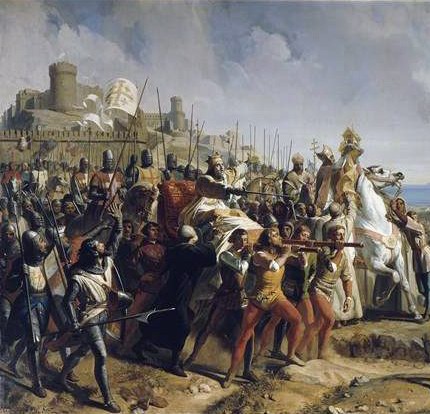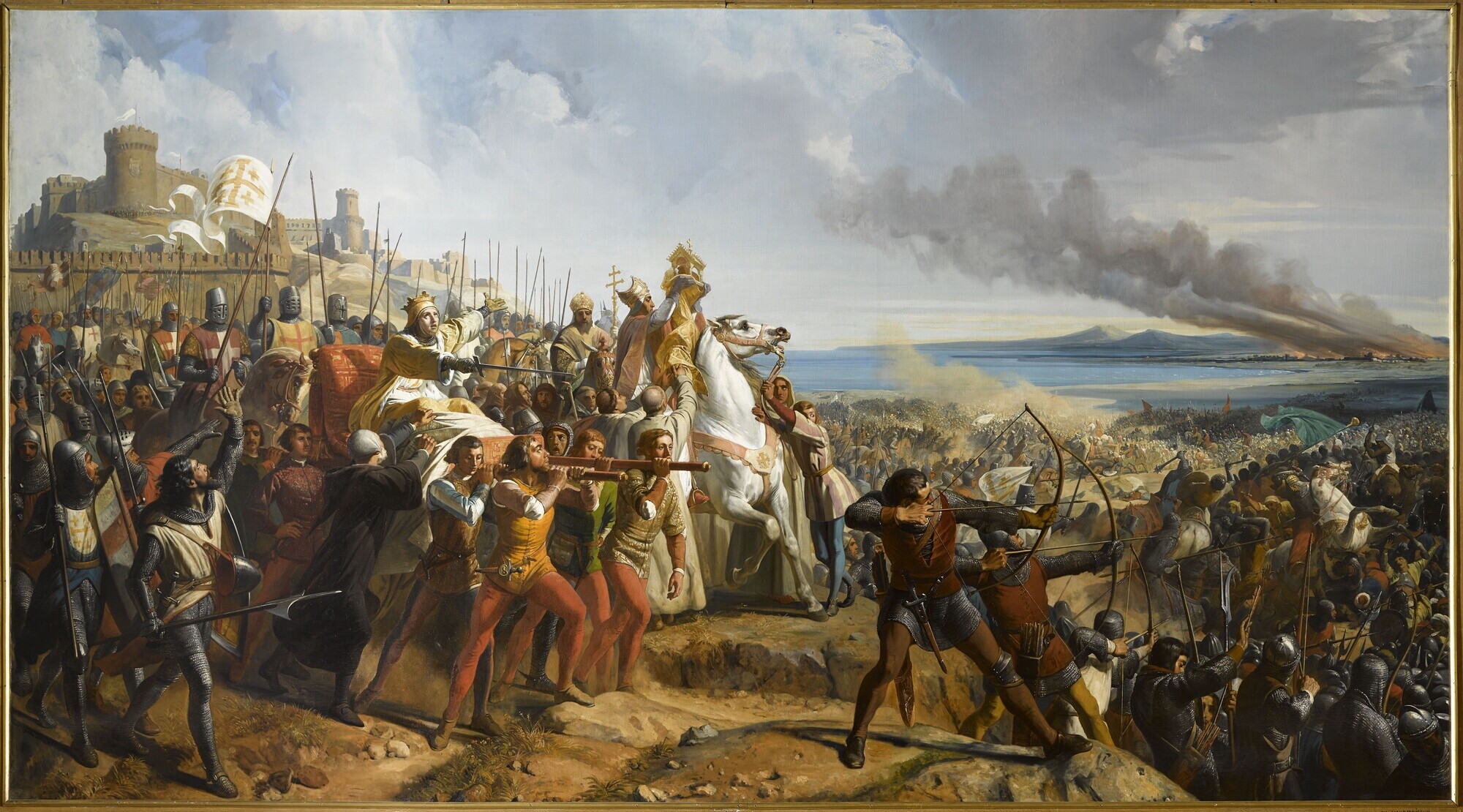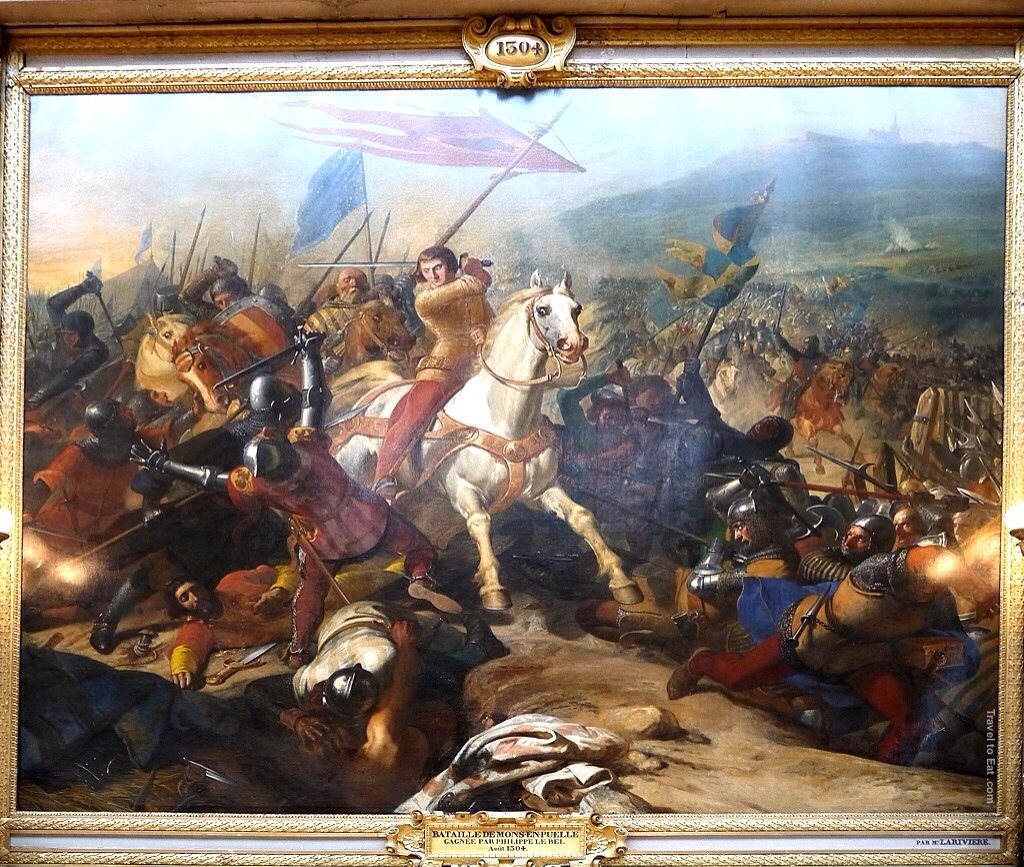Charles-Philippe Larivière
Charles -Philippe Larivière ( born September 28, 1798 in Paris, † February 29, 1876 in Paris) was a French academic painter and graphic artist who is best known for his portrayal of historical events.
Life and work
Larivière was born into a family of artists. His grandfather was the painter Charles Lepeintre ( 1785-1803 ). His brother Louis -Eugène Larivière (about 1801-1823 ) was also a painter
Charles -Philippe Larivière took in 1813 with not even fifteen years on his education at the prestigious École des Beaux -Arts. He studied with famous teachers such as Anne Louis Girodet - Trioson and Antoine -Jean Gros.
Despite its neo-classical training, he soon opened also influences the Romantic school. As subjects he chose scenes from French history primarily of the Ancien Régime and the Middle Ages, which he always represented as a good patriot in a positive light. That earned him numerous lucrative government contracts. Four single battle scenes Larivière can be seen in the Palace of Versailles (three in the Battle gallery and one opened in 1843 in the Salles des Croisades ). These halls aimed at the contemporary history Salle de 1830, which glorified the July Revolution and the Citizen King Louis -Philippe, who had come through it to power. Here Larivières hung monumental representation of the scene such as Louis -Philippe was drawn up on 30 July 1830 Ross to the cheers of the population of the crucial discussions with the Republicans in the Paris city hall. In reality, Louis -Philippe had gone on foot, and there had been no public rejoicing. The king liked the picture but exceedingly: At the presentation of the painting he praised Larivière as "authors of my big picture ". In addition, Larivière painted for the French history dedicated rooms in Versailles several portraits of historical figures, such as the Grand Master of the Order of Malta Jean Parisot de la Valette and the marshals of France, Count Rochambeau, Bugeaud de la Piconnerie and Saint- Arnaud. His portrait of General de La Brunerie hung in the stairwell of the Pavillon du Roi in Vincennes castle.
Larivière was also involved in religious art: he designed the interior of a chapel, which was dedicated to St. Eustachius, and made sketches for the stained glass windows in the Chapelle royale in Dreux.
Awards
At age 21, he won a second prize in the Prix de Rome of the Académie des Beaux -Arts, 1820, he won a recognition award. In 1824 he won first prize in the Prix de Rome with his large-scale death of Alcibiades, who enabled him, from 1824 to 1830 at the Villa Medici in Rome to work. 1825 presented Larivière for the first time in the Salon de Paris in 1827 and 1855, he won medals here. In 1836 he was inducted into the Legion of Honor. In addition, he was awarded the Ordre du Nicham Iftikar de Tunisie.
Gallery
The Battle of Montgisard
Philip the Fair at the Battle of Mons -en- Pévèle
The death of John Talbot in the Battle of Castillon
Thomas Bugeaud
Ibrahim Pasha









